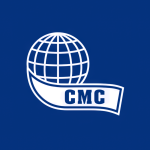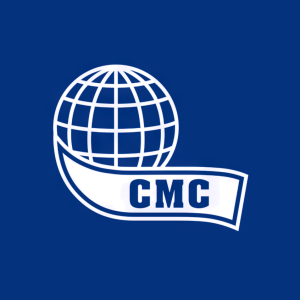Welcome to our dedicated page for Commercial Metals Co SEC filings (Ticker: CMC), a comprehensive resource for investors and traders seeking official regulatory documents including 10-K annual reports, 10-Q quarterly earnings, 8-K material events, and insider trading forms.
Steel prices shift with every scrap shipment and infrastructure bill, so parsing Commercial Metals Company’s disclosures isn’t simple. CMC’s 10-K buries micro-mill capex, its 10-Q hides rebar margin swings, and Form 4 insider buys can precede major mill expansions. If you have ever searched “Commercial Metals Company SEC filings explained simply,” this page fixes that complexity.
Stock Titan’s AI instantly turns dense documents into clear insights. Expect real-time alerts the moment a Commercial Metals Company quarterly earnings report 10-Q filing or Commercial Metals Company 8-K material events explained hits EDGAR. Our engine highlights:
- Operating segment trends from the Commercial Metals Company annual report 10-K simplified
- Scrap cost sensitivity and liquidity notes inside each 10-Q
- Commercial Metals Company insider trading Form 4 transactions with context on executive activity
- Board pay figures pulled straight from the Commercial Metals Company proxy statement executive compensation
Use these AI summaries to compare quarter-over-quarter mill utilization, track Commercial Metals Company executive stock transactions Form 4 in real-time, or confirm cash flow available for the next micro-mill project. Analysts, contractors, and bondholders rely on our understanding Commercial Metals Company SEC documents with AI to save hours and surface what drives valuation. No more scanning footnotes—our platform delivers Commercial Metals Company earnings report filing analysis and every disclosure update the moment it matters.
Commercial Metals Company completed its previously announced acquisition of Concrete Pipe & Precast, LLC (CP&P). Under the Equity Purchase Agreement dated September 17, 2025, Commercial Metals purchased all of CP&P’s issued and outstanding equity securities for a cash purchase price of $675 million, subject to customary purchase price adjustments described in the agreement.
The Equity Purchase Agreement was previously filed as an exhibit to Commercial Metals’ Annual Report on Form 10-K and is incorporated by reference. Commercial Metals also issued a press release announcing the closing of the transaction, which is included as an exhibit and furnished under Regulation FD.
Commercial Metals Company completed a private placement of $2,000 million of senior unsecured notes to help finance its previously announced Foley Acquisition. The company issued $1,000 million of 5.75% Senior Notes due 2033 and $1,000 million of 6.00% Senior Notes due 2035 to qualified institutional buyers under Rule 144A and non‑U.S. investors under Regulation S. Net proceeds were placed in escrow to fund the Foley Acquisition, related fees and expenses, and general corporate purposes.
If the Foley Acquisition is not completed by October 15, 2026, or its purchase agreement is terminated earlier, the company must redeem all of the notes at 100% of their initial issue price plus accrued interest. Both note series allow optional redemption before maturity, include change‑of‑control repurchase rights at 101% of principal plus interest, and are issued under existing indentures with U.S. Bank Trust Company as trustee.
Commercial Metals Company (CMC) has released its 2026 proxy for a virtual annual meeting on January 14, 2026. Stockholders of record as of November 17, 2025, when 111,047,945 common shares were outstanding, may vote online, by phone, by mail, or during the webcast. They are asked to elect three Class I directors to terms ending in 2029, ratify Deloitte & Touche LLP as auditor for fiscal 2026, and approve an advisory vote on executive compensation, all recommended FOR by the Board.
The proxy highlights 2025 performance: net earnings of $84.7 million, cash flows from operating activities of $715.1 million, Core EBITDA of $837.3 million, an estimated $50 million EBITDA benefit from the TAG program, and $198.8 million of share repurchases under an $850 million authorization. CMC also agreed to acquire Concrete Pipe & Precast and Foley Products to expand its precast platform and emphasizes an independent, diverse Board, strong governance practices, and pay-for-performance executive compensation design.
Commercial Metals Company (CMC) director Dawne S. Hickton reported a small increase in her equity holdings through a Form 4 filing. On 11/13/2025, she acquired 1 share-equivalent of common stock at a reference price of $59.53, bringing her directly held beneficial ownership to 539 shares.
The filing explains that this represents dividend equivalents that were deemed deferred into additional restricted stock units. These units are fully vested and will be distributed in shares of common stock after her service as a director ends, according to her elected distribution terms.
Commercial Metals Company (CMC) director reports small stock-based accrual. A board member acquired 49 shares of common stock on 11/13/2025 at a price of $59.53 per share through dividend equivalents deemed deferred into additional restricted stock units. After this transaction, the director beneficially owns 100,548 shares of CMC common stock in direct ownership form. These units are fully vested and will be distributed in shares of common stock following termination of service as a director, according to the director’s distribution election.
Commercial Metals Company (CMC) director Tandra C. Perkins reported a small increase in her holdings of company stock. On 11/13/2025, she acquired 12 shares of common stock at a price of $59.53 per share, reported as an "A" (acquired) transaction. After this transaction, she beneficially owned 3,897 shares of CMC common stock held directly.
The filing explains that these 12 shares represent dividend equivalents that were deemed deferred into additional restricted stock units. These units are fully vested and will be distributed in shares of common stock after her service as a Director ends, according to her distribution election.
COMMERCIAL METALS Co (CMC) director John R. McPherson reported a small automatic increase in his equity holdings. On 11/13/2025, he acquired 35 shares of common stock at $59.53 per share, recorded as additional restricted stock units created from dividend equivalents. After this transaction, he beneficially owned 16,545 shares directly and 6,722 shares indirectly through a limited partnership. These units are fully vested and will be paid out in CMC common stock after his service as a director ends, based on his distribution election.
Commercial Metals Company (CMC) director Dennis V. Arriola acquired 15 shares of common stock on 11/13/2025 at $59.53 per share, increasing his directly held position to 5,016 shares. The new shares represent dividend equivalents that were deemed deferred into additional restricted stock units, which are fully vested and will be paid out in common stock after his service as a director ends, in line with his distribution election.
Commercial Metals Company agreed to issue and sell $1,000 million of 5.75% Senior Notes due 2033 and $1,000 million of 6.00% Senior Notes due 2035 in a private placement to qualified institutional buyers under Rule 144A and to non‑U.S. persons under Regulation S.
The company plans to use the net proceeds to fund the purchase price of its previously announced acquisition of the entities owning Foley Products Company, LLC, pay related fees and expenses, and for general corporate purposes. The notes offering will be completed before the Foley acquisition closes, and each is not contingent on the other.
If the Foley acquisition is not completed by October 15, 2026 or the purchase agreement is terminated earlier, the company must redeem all notes at 100% of the initial issue price plus accrued and unpaid interest to, but not including, the special mandatory redemption date.


